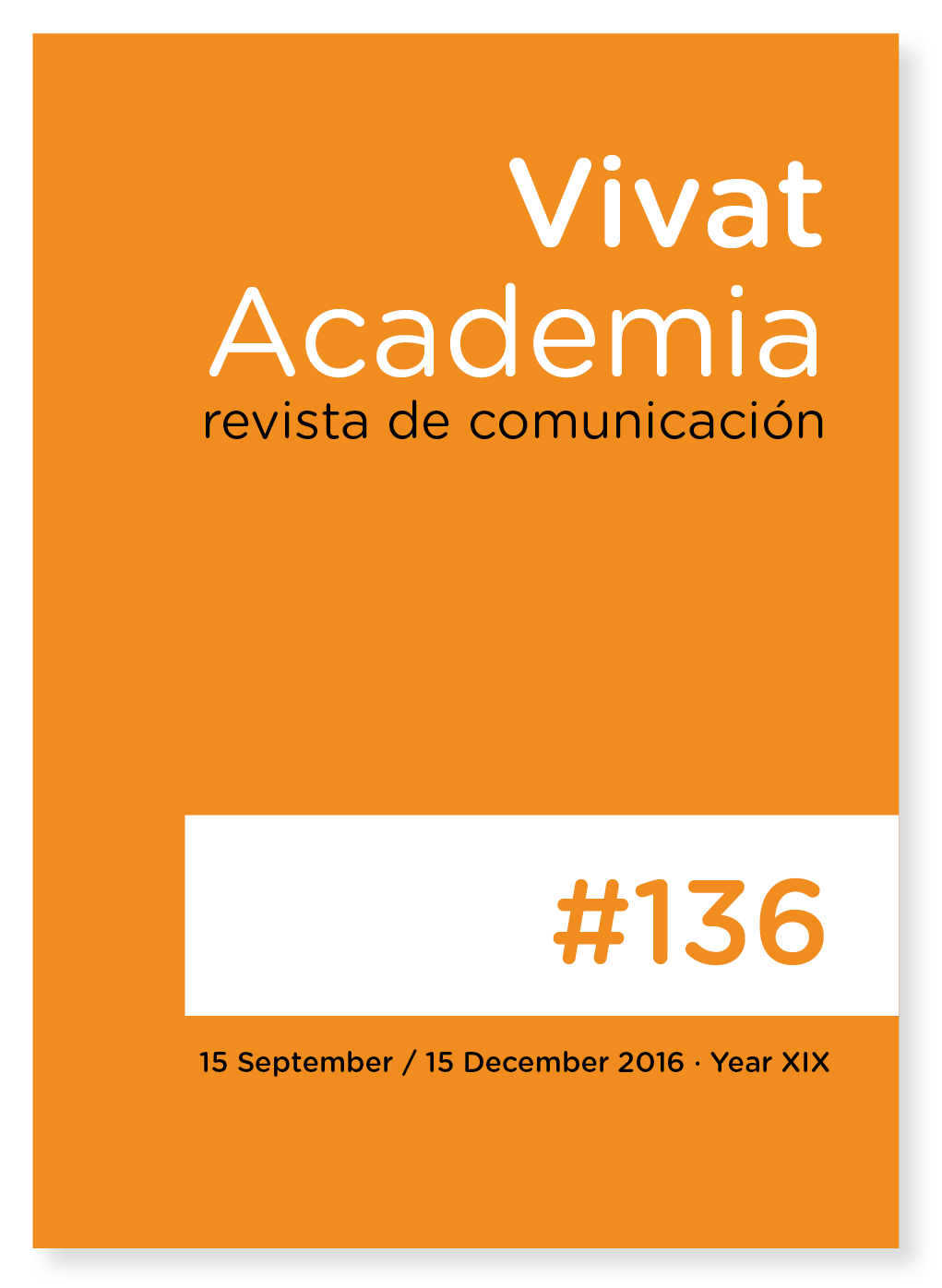Didactic proposal of analysis of audiovisual images applied to documentary "statues also die”
Main Article Content
Abstract
As understanding the, photographic image needs of a comprehensive registration system allowing us to consider the analysis parameters systematically, so too happens with the audiovisual image (e.g. documentary, feature film, and so on). This article presents a proposal for the analysis of audiovisual works based on the isolation of key frames and their subsequent analysis in succession through the use of the parameters of static image analysis. Photography often entails the concretion of a succession of images that remain in the act, that is, the synthesis of a succession of images. Choosing the key frame containing the analysis parameters allows us to conjugate a system for still image analysis for audiovisual images. This article presents both such analysis parameters and a proposal for their practical application to the two initial sequences of the documentary “Statues Also Die” (Chris Marker, Alan Resnais y Ghislain Gloquet, 1953), which defends a critical approach to ethnocentrism applied to the black-African artistic manifestations.
Downloads
Article Details
The main author must deliver the letter of transfer of copyright, according to the model provided by Vivat Academia, Revista de comunicación, which declares the transfer of copyright to the journal and make explicit the rights of authors regarding the dissemination and use of the manuscript once published.
Creative Commons Attribution/Non Commercial 4.0 International
References
Complete books:
Chapter in a book or entry of a reference book:
Arnheim, R. (1976). Arte y percepción visual. Madrid: Alianza.
Arnheim, R. (1969): El pensamiento visual. Barcelona. Paidos.
Bardin, L. (1986). Análisis del contenido. Madrid: Akal.
Einstein, C. (2002). La escultura negra y otros escritos. Barcelona: Gustavo Gili.
Eisner, E.W. (2004). El arte y la creación de la mente: el papel de las artes visuales en la transformación de la conciencia. Barcelona: Paidós.
Gardner, H. (1982). Arte, Mente y Cerebro. Una aproximación Cognitiva a la Creatividad. Buenos Aires: Paidós.
Gil Urdiciain, B. (1996). Manual de lenguajes documentales. Madrid: Noesis.
Iniesta, F. (1998). Kuma. Historia del África negra. Barcelona: Bellaterra, Biblioteca de Estudios Africanos.
Kerchache, J., Paudrat, J. L., y Stephan, L. (1999). Arte africano. En La Enciclopedia Summa Artis (Vol. XLIII). Madrid: Espasa Calpe.
Laude, J. (1968). Las artes del África negra, Barcelona: Nueva Colección Labor.
Leiris, M. (1967). África negra: la creación plástica. Madrid: Aguilar.
Lowenfeld, V. (1961). Desarrollo de la capacidad creadora Buenos Aires: Kapelusz.
Maiez, J. (1993). Los lenguajes documentales y de clasificación: concepción, construcción y utilización en los sistemas documentales. Madrid: Fundación Germán Sánchez Ruipérez.
Malgesini, G., y Giménez, C. (2000). Guía de conceptos sobre migraciones, racismo e interculturalidad. Madrid: Catarata.
Marín, R. (2006). Didáctica de la educación artística. Madrid: Pearson Educación.
McClusky, P., y Thompson, R. F. (2002). Art from Africa: Long steps never broke a back. Seattle, Wash: Seattle Art Museum.
Pinto Molina, M. (1989). Introducción al análisis documental y sus niveles: el análisis de contenido. Boletín de la ANABAD, vol. 39, nº 2, p. 323-341.
Read, H. E. (1954). El significado del arte. Buenos Aires: Losada.
Sellier M., Lesage M. (2006) África, pequeño Chaka. Zaragoza: Edelvives.
Willett, F. (2000). Arte africano. Barcelona: Destino.
Torres, M. P. (1996). África. Reflexión geográfica sobre su población y compartimentación territorial. Espacio, tiempo y forma, serie V5, Geografía, 9(1), 11-37.





